
Bracha Weingrod
Can you help me solve the riddle?
Perhaps someone reading this will know the name of H. Braun, who wrote a fascinating cookbook in 1914 in Yiddish - almost 100 years ago, published in New York. After searching all records (Library of Congress, Ellis Island etc) I am still at a loss. Not only do we not know what the H. stands for, but are we 100% sure that she is a woman?
But let me tell you how this fascinating book came to me, the love affair that ensued, and the English translation of Yiddish Family Cookbook.
How did I come upon this unique cookbook? In 1974, when we finally arrived permanently in Israel, we decided to buy a rather old, dilapidated house in Jerusalem. At that time one needed five guarantors in order to obtain a mortgage. So five dear friends signed for us, and we were able to move in and start renovating. As soon as the house was livable, we invited these friends back for a housewarming party. Then we put up signs for their contributions: The Crown bathroom, the Tadmor kitchen, and so on.
It was on this occasion that Chaim and Miriam Tadmor presented us with the gift of Dos Familien Kokh Bookh, published in 1914, worn but legible, and which solidified our common love of Yiddish. I happily placed it on my shelf along with my small collection of cookbooks.
It was only several years later, on one of my husband’s sabbaticals in Stony Brook, New York, that my love affair began. It was there that I met a wonderful couple, sociologists Rose and Lewis Coser. Lew was a friend of Irving Howe, who had then published his well-known World of Our Fathers. Rose was upset, and took great umbrage - “And what about the World of our Mothers?” she asked. And she thereby set about sending students into the ghettos of New York to tape interviews with Italian and Yiddish-speaking grandmothers.
Having spent over a year in Sardinia, Italy, and recalling my years as a Yiddish teacher in Winnipeg and Chicago, I happily volunteered to help translate these tapes for her. And then it struck me – "How could one write about the world of our mothers without a cookbook?" After all, that is where so much of their time, energy, creativity and culture…yes, food culture was spent. Only then did I begin to read my old worn Yiddish cookbook, and was amazed by the wisdom, the wit, and the good sense of H. Braun, the author of the book.
Upon retiring from the David Yellin Teachers College, where my specialty was, and is, dyslexia, I found the time to rekindle many wonderful connections. I would read, translate, chuckle and thoroughly enjoy the words and the sayings. With Weinreich’s Yiddish dictionary in one hand, and the Oytser fun Yiddishen Shprach in the other, I began this labor of love.
After receiving encouragement from Joan Nathan, Deborah Moore and other experts in the fields of both cookery and Jewish history, I hesitatingly sent out a few chapters to publishers. I received twenty of the warmest and most enthusiastic rejection letters, but nevertheless I decided to go it alone and self-publish through Amazon’s createspace venue. The writing and editing were pleasurable and painless. What surprised me was the difficulty in choosing pictures or images, obtaining permission and submission requirements as well as surprisingly large amounts of money.
However, I truly felt that if so many of my friends enjoyed this, there would be an audience. This book is geared to those who love history as much as cooking. It is a picture of a time when Jewish women were anxious to become American or Canadian or British. They wanted to imitate their neighbors, speak like them, understand them, buy like them and cook like them. Professor of History, Hasia Diner, in her excellent introduction to the book, places this period of The Great Immigration (1890s – 1915) into an academic framework. She positions the recipe readers in the second surge of immigrants, those who were seeking out the Settlement houses in New York, Chicago, London …wherever, to learn how to adapt.
One may ask: "Is this book relevant and useful today?"
For many – yes. The recipes use the basic ingredients of their day, which in fact speak to the hearts of today’s organic or green generation. In addition, all recipes adhere to kashrut, which makes it relevant to a new health-seeking religious generation. Braun, in 1914, dismissed the importance of schmaltz, and called for pure olive oil as the cleanest and healthiest fat….one from plants, and not from animals. She also suggests lemon juice instead of salt and chides against eating herring in the summer. She also gives a recipe for almond sauce, to be used in fleishike dishes. As a first rate nutritionist, her passionate concern was the "mogen" – the stomach's digestive process.
There is a fun chapter on “Cooking for a Sick One” – Kokhen far a Kranken, which is very amusing. Also one on sandwiches (Men nemt nisht ‘teplech’ tsum office). Or descriptions of how to test the heat of an oven, how to prevent store owners from cheating unsuspecting women, how to tell whether a fish is fresh or a chicken is young…all replete with wisdom and even a few politically incorrect remarks.
Is there a market for such a book? Well, those who have read it find it interesting, charming and full of nostalgia. The market response has been pretty enthusiastic and enough to keep me optimistic. It is the kind of book you can poke into now and then and "shep" a little "naches" and imagine another era. For me this was a trip and a labor of love. I may not have gone back literally to my mother’s village in Mogilov, Russia, but I certainly felt transported and enveloped in the warmth of going back to my roots. And I hope my readers will feel this as well.
Bracha Weingrod will be the guest speaker at the ESRA IN TEL AVIV monthly meeting on Sunday, June 12th, 2011 at 10 a.m. at the Beit Ariela Public Library, 25 Shaul Hamelech Blvd. T.A. For reservations please call 09 748 2957.
 dear editor 159 magazine
dear editor 159 magazine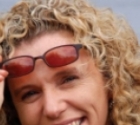 OVERNIGHT OAT & SESAME BARS
OVERNIGHT OAT & SESAME BARS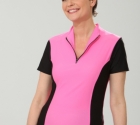 IN THE SWIM
IN THE SWIM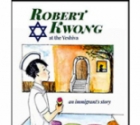 Robert Kwong at the Yeshiva
Robert Kwong at the Yeshiva 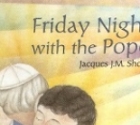 Friday Night with the Pope - A Book Review
Friday Night with the Pope - A Book Review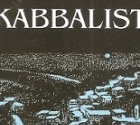 The Kabbalist - A Book Review
The Kabbalist - A Book Review  Bracha Weingrod
Bracha Weingrod